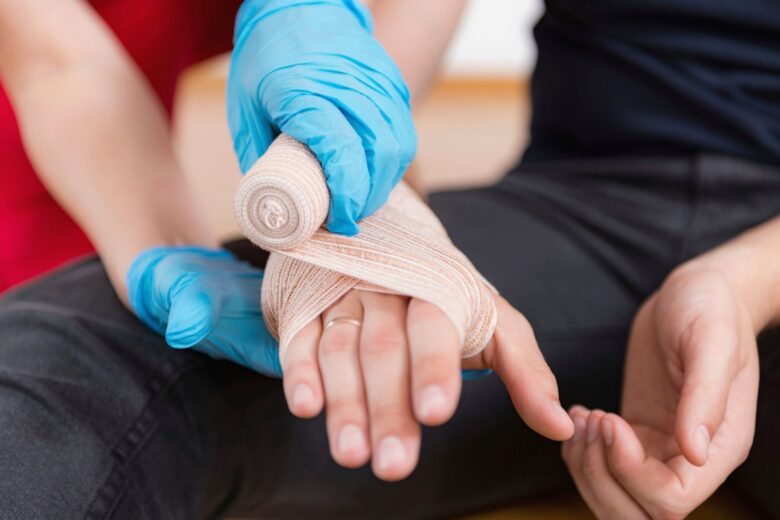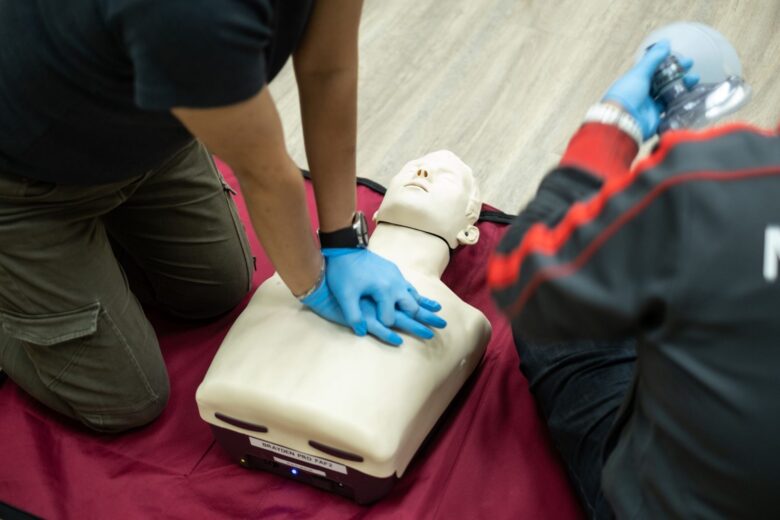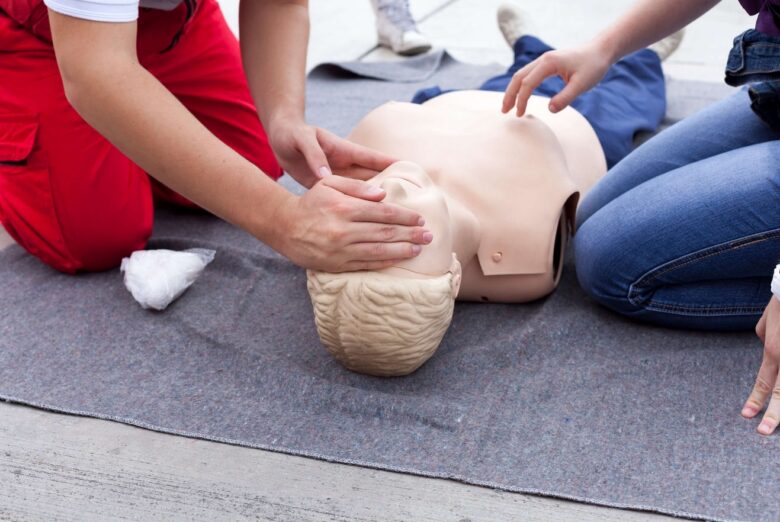Have you ever wondered why a mom would rush to wash their kid’s wounds from the playground? Or how did the teacher at school know to apply a bandage on a minor cut? First aid certification and its learnings are the answer to all questions related to injuries. People usually find themselves confused and in pain upon getting injured. But accidents do not come with warnings. Keeping calm and understanding your situation is the best medicine. You can help not only yourself but countless people. In this article, you will gain a basic understanding of first aid. It also throws light on certification courses and how to get them.
Contents
What is first aid?
The medical fraternity defines first aid as the primary medical treatment after injury. It is a quick process that requires knowledge of the topic and the presence of the mind. Some examples of first aid include helping a dehydrated individual with water. It could consist of cleaning the eyes with distilled water. A minor dressing of wounds with over-the-counter drugs also falls under first aid. Any use of prescription medicines does not qualify as first aid. Some procedures could need the help of machinery. First aid also involves reading signs of unseen injuries like a heart attack. Patients suffering from heat stroke and hypoglycemia also need first aid. But, you must hold a first aid certification to administer it to a patient.

Source: icpri.com
What gets covered in a first aid certification course?
No one knows where they may need to use their knowledge of first aid. A first aid course from any reputed institution will help you remain focused on the problem. You could even end up saving your own life. A majority of these first aid certification courses teach the following:
- Cardiopulmonary Resuscitation (CPR): A procedure that helps a dying heart pump blood. A heart attack patient needs CPR as it buys the patient time to wait for professional help to arrive.
- Treating burns: Burn injuries damage the body at great speed. A thorough first aid course could prepare you to provide the first line of treatment to a burn patient.
- Sprains: On a race track or in daily life, sprains crop up everywhere. You will learn to use the proper techniques and drugs to nip the pain till you reach a medical facility.
- Choking: Death due to asphyxiation is common in toddlers and the elderly. Knowing the right maneuvers allows you to save a choking person.
- Concussion: Internal injuries need identification and immediate action. An excellent First aid course enables you to identify a concussion. Your quick action could help a person from dying.
- Seizures: The first aider must follow a specific activity pattern during an episode. It calms the patient and allows the Emergency Medical Services to perform better.
- Gunshot wounds: Gunshot wounds are extremely serious and require immediate medical attention. If you hear gunfire and see someone bleeding profusely from a gunshot wound, run towards them as fast as you can and provide first aid until paramedics arrive. gunshot wounds frequently cause death within minutes unless treated quickly.
- Slips and trips: Slips and trips can lead to falls, cuts, bruises, and other injuries if not caught in time. Always be aware of your surroundings and watch for signs that someone may be in danger before crossing busy streets or climbing stairs alone. If you witness a fall or an accident involving injury, always contact emergency services for help.

Source: myheart.org.sg
When considering a first aid course, it is important to consider what you are looking for. A basic first-aid course will teach you how to recognize and treat common injuries and illnesses. However, if you want to become a certified first responder, you will need additional training. In order to find the right course for you, here are some things to keep in mind: First, decide what level of certification you are interested in. There are three levels of certification: Basic First Aid (BF), Advanced First Aid (AF), and Emergency Medical Responder (EMR).
Basic First Aid is the most basic level of certification and covers just about everything. You will learn how to recognize and treat common injuries and illnesses.
Advanced First Aid is the next level of certification and covers more advanced topics such as respiratory care, child safety, poison control, fluid resuscitation, spinal cord injury treatment, and cardiac arrest treatment.
Emergency Medical Responder is the highest level of certification and requires more than just Basic or Advanced First Aid skills. You must also be able to perform procedures such as CPR (cardiopulmonary resuscitation), use a defibrillator, understand medical terminology, and provide patient transportation. Before deciding which first aid course is right for you, it is important to know what type of person you are. If you plan on becoming a certified emergency medical responder, then an EMR course may be the best.

Source: atr-ltd.co.uk
How can you get first aid certification online?
Different institutions cover varied topics under their first aid certification program. Online certifications give you easy access to information. A few ways you can get your first aid certification are as below:
- Look up websites of renowned institutions that offer such courses. If they provide an online version of their class, you do not have to doubt its authenticity.
- Select the course you need to undertake. Some places offer you a combined approach. Others would provide individual lessons for CPR or AED.
- If your job requires you to take a first aid certification, check with your employer for the details.
- Create an account on the selected institution’s website. Start your course and make the payment for the certification.
- Most online courses offer a self-paced learning module. You do not need to travel to a college. So, you can do this course on your own time.

Source: misafety.ca
What to do if you are injured in an accident
If you are unlucky enough to be injured in an accident, the first thing you need to do is assess the extent of your injuries. You may find that you have sustained injuries to your head, neck, spine, chest, and other areas of your body.
If you are unsure about how serious your injuries are or if they require medical attention, then the best course of action would be to call an ambulance. However, if you are feeling more confident after assessing your injuries then you can try to self-help them by doing the following:
1) Make sure that you stay calm and reassure yourself that help is on its way. If possible try to keep any movement restricted until paramedics arrive.
2) Apply pressure to any wounds that are bleeding heavily. Try not to wrap it too tightly as this could cause further damage and increase the chance of infection.
3) Elevate any injury that is above the waist if possible in order to reduce pressure on the spinal cord or internal organs.
4) If there is a fire involved do not enter it as this could cause further injury. Use a fire extinguisher if necessary.
Conclusion
Your knowledge of first aid could help your community. It could even save a family member or friend’s life in danger. The first aid course at the American HealthCare Academy (AHCA) is easy to register for. Their first aid certification grants the students 2.0 credits. It identifies and teaches how to tackle medical emergencies like bee stings, choking, and joint-related issues. AHCA also offers a combined CPR and first aid course. This one helps people whose job demands certification. Its extensive modules and details will give you an edge. Register now on their website and grab some exciting group discounts today.
